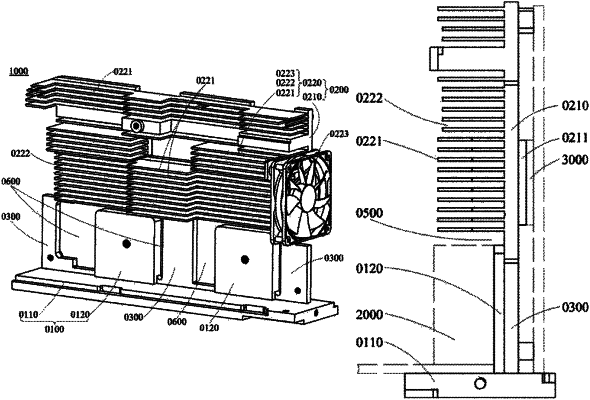| CPC H01L 23/3672 (2013.01) [H01L 23/467 (2013.01); H05K 7/2039 (2013.01)] | 20 Claims |

|
1. An integrated radiator having a temperature gradient disposed between a high-temperature device and a low-temperature device, comprising:
a first heat dissipation unit and a second heat dissipation unit which are integrally fixed,
wherein the first heat dissipation unit is configured to maintain the high-temperature device within a first temperature range, the second heat dissipation unit is configured to maintain the low-temperature device within a second temperature range,
a thermal conductive path of the first heat dissipation unit is isolated from a thermal conductive path of the second heat dissipation unit, and
the first heat dissipation unit is physically connected to but thermally separated from the second heat dissipation unit;
wherein the second heat dissipation unit comprises a first heat dissipation plate, a side surface of the first heat dissipation plate facing away from the high-temperature device is kept in contact with the low-temperature device, and a side surface of the first heat dissipation plate facing towards the high-temperature device is provided with an auxiliary heat dissipation channel, and the auxiliary heat dissipation channel is thermally separated from the first heat dissipation unit.
|